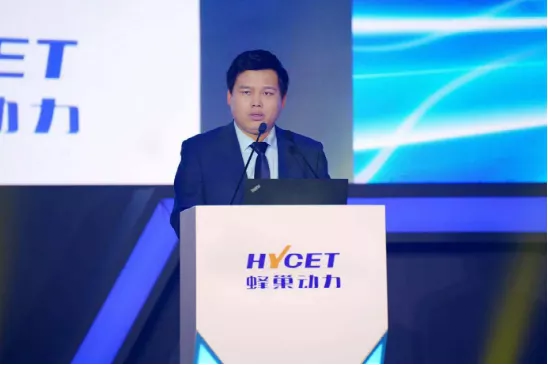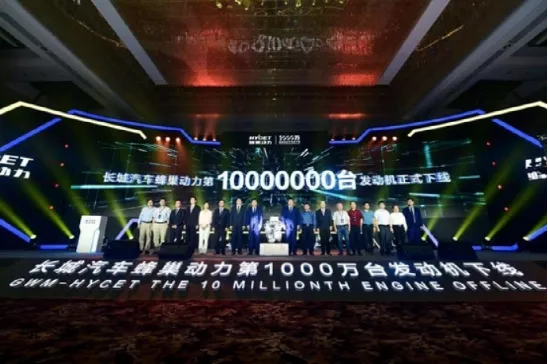Chengdu Rollers Club
Original by Li Yizhi
Introduction
Chengdu Rollers Club is a car media platform under Outing100. We focus on the evolution of the automobile travel industry chain.
Can China produce world-class engines?
Since 2011, when this question was raised on Zhihu, it has received 944 answers to date. At that time, the scale of domestic brands was small and their technical capabilities were weak, and many of the answers were very pessimistic, taking into account the overall gap between China’s domestic and foreign automobile industries.
Ten years later, domestic brands have caught up with multinational car companies in the field of engines, narrowing the gap with the world’s mainstream level, but have encountered new problems – the trend of electrification.
Global car companies have successively proposed “no longer developing internal combustion models” by 202X, and the sword of Damocles of China’s government’s “carbon peak by 2030, carbon neutrality by 2060” energy-saving and emission-reduction targets hangs high. The Chinese and even the global automobile industry policies have fully turned to new energy vehicles, especially pure electric vehicles. The idea of replacing oil with electricity is now the “political correctness” of the automobile industry.
In this context, is it still necessary to develop fuel engines?
On June 17th, Foton Motor’s subsidiary, Honeycomb Power, produced its 10 millionth engine. This gives the answer from Foton Motor: it is necessary.
Chengdu Motors’ Upward Leap
Returning to the opening question of this article. Ten years ago, people were not optimistic about the development of self-developed engines by domestic car companies. At that time, most domestic car companies’ self-developed engine research had only just started after a few years. Even Changan, which established its internal combustion engine company in 2000, still used Mitsubishi’s 4G63 engine in the Haval H6 released in 2011.
However, along with the increase in sales of Changan automobiles and the increase of external technical exchanges, talent introduction and training, Changan’s engine development has also been continuously deepened, and achievements have been produced.
In 2011, Changan’s self-developed 4G15 engine won the “Top Ten Engines of China” award that year. This engine was subsequently installed on Haval series cars, especially the Haval H6, in mass production. As Haval H6 becomes a popular family car, the sales volume of 4G15 increases sharply, with cumulative sales of nearly 6 million units to date.
In 2017, Changan’s new generation 1.5T engine, the 4B15, was released with cylinder-injection direct-injection technology and, for the first time among domestic car companies, continuous variable valve lift (CVVL), which is also an advanced technology internationally. As a result, the engine has stronger power and better fuel economy. With this engine, which won the “Top Ten Engines of China” award that year, Changan’s engine technology has truly emerged in the field of small displacement economy engines.On June 17th this year, the latest model 4B15C, which integrates advanced technologies such as CVVL, VGT turbocharger, thermal management module, 350bar mid-position direct injection, and cylinder head integrated exhaust manifold, was mounted on vehicles such as the Haval Chitu, Dagou, and F7, marking the production of the ten millionth engine by Great Wall’s Engine Technology Division, Honeycomb Power.
After 20 years of introduction, imitation, absorption, and innovation, the civilian engine technology of Great Wall Motors has evolved from a gap with advanced foreign technology to keeping up with the world’s mainstream level. For Great Wall, the biggest gap between its engines and those of multinational automakers is no longer technology, but “brand.”
That is why in the last two years, Great Wall has continuously developed high-end models and shifted its research and development focus to large-displacement (2.0T and above) engines, launching the 4C20 and 4N20 engines, the former installed on the Haval F7, F7X, and some WEY models, while the latter is the engine of the new Haval Dagou and Tank 300 2.0T models. Great Wall’s Powertrain Division, Honeycomb Yi Chuang, was also officially established in 2018.
In April of this year, Great Wall released the 6Z30 3.0T V6 engine, which has a maximum power output of 260kW and is compatible with hybrid systems. When combined, the power output can reach 410kW. While having high output power, the 6Z30 also takes into account fuel efficiency, with a thermal efficiency of over 38%.
Obviously, in the fuel vehicle market where the engine is a symbol of the vehicle’s value, Great Wall is trying to turn its strong technology into brand power and serve as a springboard for the overall brand of Great Wall Motors.
However, in the long run, the trend of renewable energy replacing fossil energy is irreversible. In the near future, governments around the world are expected to issue bans/limits on fuel combustion due to pressure to reduce carbon emissions. Even large automakers that occupy advantageous positions in engine technology have abandoned the development of new-generation internal combustion engines, and the fuel engine industry has become a sunset industry. It begs the question: is it worth Great Wall’s continued investment in this area?
Similar questions were posed to Li Jian, director of Honeycomb Power Research Institute, in an interview after the 10 millionth engine rolled off the production line.His response is that the power system in the automotive industry is undergoing transformation. “Rather than saying the rise of a certain type of energy, it is more like diversified development, and it will continue for a long time.” “We believe that internal combustion engines still have a long life cycle and can meet customers’ various usage scenarios.”
One evidence is that the “Energy-saving and New Energy Vehicle Technology Roadmap (2.0 version)” issued at the 2020 China Automotive Engineering Society Annual Conference pointed out that “energy-saving vehicles are still the market mainstream for a certain period of time, and the trend of engine efficiency, electromechanical coupling decarbonization, multi-gear transmission, lightweight, and other trends are emerging.”
Therefore, the mission of Honeycomb Power is to improve engine performance while keeping up with the advanced and clean combustion technology of internal combustion engines, and to meet the diversified needs of consumers and policy compliance. It aims to avoid embarrassment in the market and avoid the iron fist of energy conservation and emission reduction requirements (such as double credits).
To this end, Honeycomb Power is building a rich power system product matrix for the future. In the next three years, it will launch a total of 23 engines based on 4 fuel forms and 6 product platforms. These engines include small-displacement fuel engines that meet the widest market demand, large-displacement fuel engines for high-performance requirements, and hybrid engines that achieve extreme energy conservation and emission reduction.
For example, the 1.5L naturally aspirated engine 4G15H exhibited on June 17th is specifically designed for hybrid models. In November this year, its successor, the fourth-generation hybrid-specific engine, will be released, with a thermal efficiency of 41% and an output power of 110 kW. By 2022 and 2023, Honeycomb Power will also launch hybrid-specific engines with thermal efficiency of 43% and 45%, which will adopt industry-new-generation advanced technologies such as pre-chamber combustion, ultra-high compression ratios, and dilute combustion.
On the 2.0L engine, Honeycomb Power will also apply the above technologies and develop a variable compression ratio internal combustion engine. The maximum thermal efficiency of this series of products will reach 43%.
In fact, not only Great Wall, but also self-owned car companies with some scale, are still developing new generations of internal combustion engines through different methods. As a latecomer in the global automotive industry, self-owned car companies have never had an easy road to engine development-twenty years ago, they faced the situation of weak accumulation of domestic internal combustion engine-related industries and huge gaps with joint venture brands. Twenty years later, when their efforts in engine technology have paid off, internal combustion engines have been sentenced to “death penalty” for energy conservation and emission reduction targets.However, Chen Xiaoliang, the chairman of Honeycomb Easy Creation, believes that the method of engine combustion for power generation will not be replaced, and policies can “ban oil”, but engines will still exist. Even if traditional power engines are reduced or disappear, engines used for hybrid power will “inevitably exist for a long time in the future.” From another perspective, Great Wall and other automakers developing new types of internal combustion engines still have great potential — data shows that as of this year, 90% of vehicles in the Chinese car market are still traditional fuel vehicles. The afterglow of the engine seems to be long-lasting.

This article is a translation by ChatGPT of a Chinese report from 42HOW. If you have any questions about it, please email bd@42how.com.
